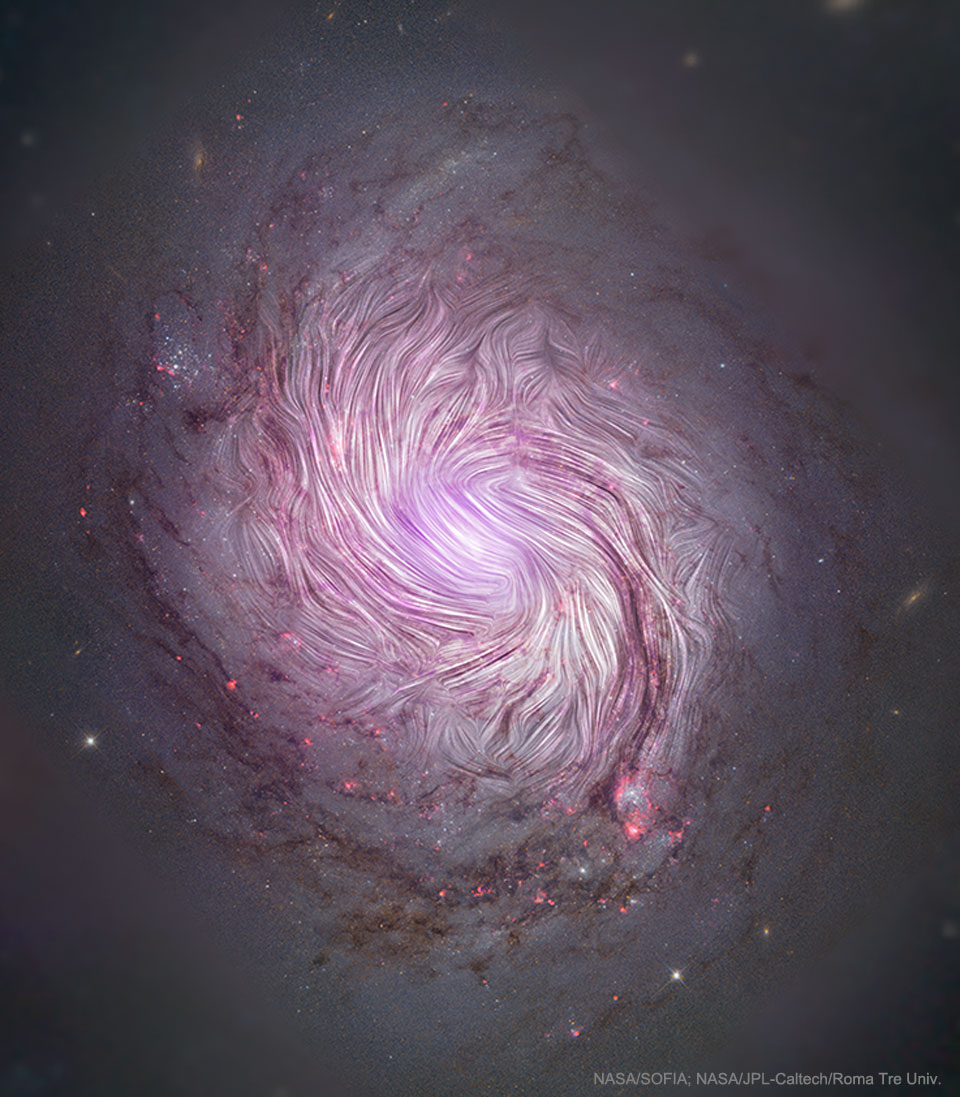旋涡星系M77的磁场
2019 December 16
The Magnetic Fields of Spiral Galaxy M77
Image Credit: NASA, SOFIA, HAWC+; JPL-Caltech, Roma Tre. U.; ESA, Hubble, NuSTAR, SDSS
Explanation: Can magnetic fields help tell us how spiral galaxies form and evolve? To find out, the HAWC+ instrument on NASA’s airborne (747) SOFIA observatory observed nearby spiral galaxy M77. HAWC+ maps magnetism by observing polarized infrared light emitted by elongated dust grains rotating in alignment with the local magnetic field. The HAWC+ image shows that magnetic fields do appear to trace the spiral arms in the inner regions of M77, arms that likely highlight density waves in the inflowing gas, dust and stars caused by the gravity of the galaxy’s oval shape. The featured picture superposes the HAWC+ image over diffuse X-ray emission mapped by NASA’s NuSTAR satellite and visible light images taken by Hubble and the SDSS. M77 is located about 47 million light years away toward the constellation of the Sea Monster (Cetus).
旋涡星系M77的磁场
影像来源: NASA, SOFIA, HAWC+; JPL-Caltech, Roma Tre. U.; ESA, Hubble, NuSTAR, SDSS
说明:磁场能告诉我们旋涡星系是如何形成和演化的吗?为了找到答案,美国宇航局(NASA)的索非亚天文台(由波音747飞机改装而成)上的HAWC+设备在旋涡星系M77附近进行探测。HAWC+通过观测沿局部磁场方向旋转的细长尘埃颗粒所发出的偏振光,来绘制磁力图。HAWC+的影像显示磁场似乎追溯到了M77内部区域的旋臂,这些旋臂可能突出了星系椭圆形结构的引力所引起的流入气体、尘埃和恒星中的密度波。我们将HAWC+影像叠加在由NASA的NuSTAR卫星绘制的弥散X射线辐射图和由哈勃太空望远镜和SDSS所拍摄的可见光影像上,从而得到了这幅特征影像。M77位于鲸鱼座方向,距离我们约4700万光年远。

